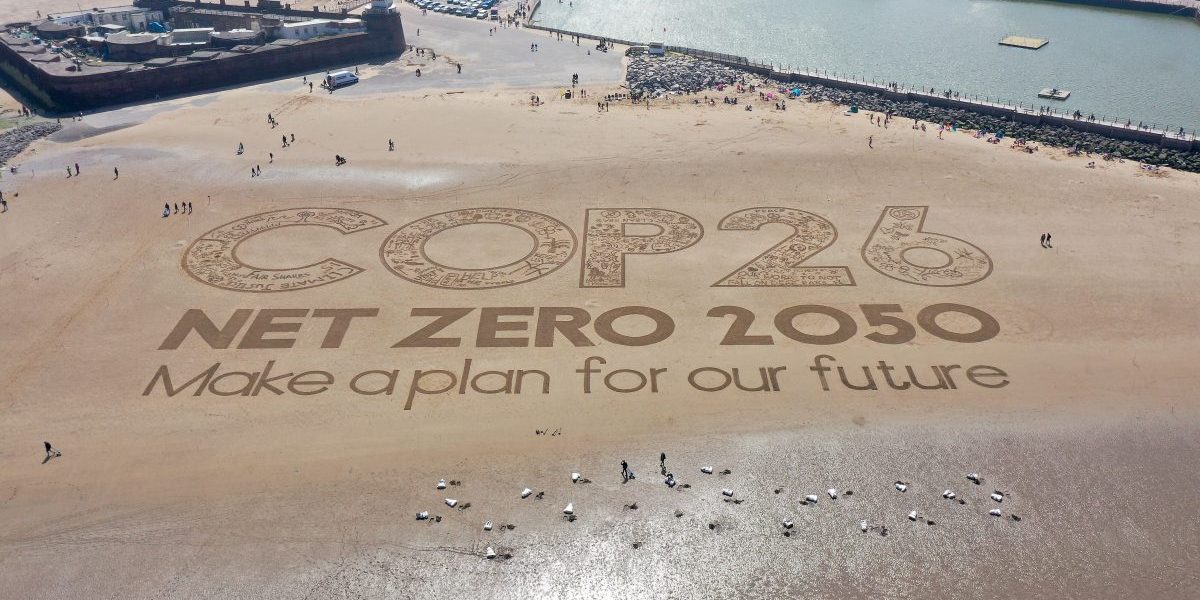In this Council of Councils global perspectives series, five experts take stock of where the UN climate summit failed, areas of progress, and how much work remains to strengthen international efforts enough to limit global warming from reaching catastrophic levels.
After Glasgow Climate Pact, Make Nations Accountable
Successfully staging COP26 during a global pandemic was a major achievement. The negotiated outcome overall was at the top end of what was feasible, including finally completing the Paris Agreement’s rule book. Commitments were made to increase adaptation funding. The language on reducing the use of coal was a UN first. The real test of Glasgow, however, will be whether those with weak nationally determined contributions (NDC) in fact do more in 2022.
Glasgow was the first time countries met to increase their national climate ambitions as set forth under the Paris Agreement’s five-year ambition raising cycle. The outcome was mixed. Most large developed countries (except Australia) announced significant NDC enhancements well before COP26, as did several mid-size and vulnerable countries. At COP26 itself, India, Thailand, and Vietnam made substantial moves.
Some major carbon-emitting economies, however, only tweaked their 2030 targets (China and Russia), or did not improve them (Indonesia), or actually weakened them (Brazil and Mexico). Yet focus on this in media and civil society narratives around COP26 was minimal.
That matters. Country targets under the Paris Agreement are nationally determined: no process or negotiation guides a country’s adequate or fair contribution. The European Union, United Kingdom, and many vulnerable countries would have preferred it otherwise, but Brazil, China, India, and others, with U.S. acquiescence, prevented such a development at COP19 in 2013. The Paris Agreement relies on global pressure, especially for those that do not have a strong domestic civil society.
This situation raises the question of why so few were called out at COP26. Developed countries had disappointingly failed to meet their goal of providing $100 billion to developing countries in 2020 to help their climate efforts. They resisted international funding for loss and damage. Some ambitious NDCs were viewed with skepticism, given the countries’ records of failed targets. These issues dominated much of the discourse in Glasgow.
Some reasons were less understandable. In civil society, it is more congenial to call out developed countries. Arguably, the U.S.-China joint declaration to enhance climate action, though it lacked substance, provided China with political cover for its weak NDCs.
All countries are now requested to revisit and strengthen their NDC targets in 2022, especially those not aligned to temperature goals. If 1.5°C is to be within reach, far more ambition is needed. Pressure on laggards is imperative. Civil society needs to ask itself how it can press for 1.5°C yet not exert pressure on the biggest emitters. Developed countries need to come to COP27 in Egypt in 2022 with both a far stronger performance on finance and a willingness to find ways forward on loss and damage.
Peter Betts
Associate Fellow, Chatham House (United Kingdom)
A Wasted Opportunity for a Grand Coal Bargain With India
In 2011 at COP17, India said that it could not issue a blank check and sign away the lives of 1.2 billion people by agreeing to carbon mitigation mandates. In 2021 at COP26, it was ready to sign the check but only on the condition of long overdue financial help from wealthy countries.
The COP26 presidency could have struck this grand bargain but instead chose a narrow activist role to abolish coal on the same timeline as in the West, without provisions for clean and affordable alternative energy for the developing world. This move cornered countries such as India, which relies on coal for 70 percent of its electricity generation. The United States, Australia, and China—each of which consumes far more coal than India on a per-person basis—hid behind India’s coal proposal. Although all three countries face an easier transition to alternative fuels, they did not sign the separate pledge to phase out coal. Their failure to do so helped add COP26 to the list of COP failures despite its many achievements, such as strengthening the 1.5°C target, securing agreement from all countries to revisit and strengthen their nationally determined contributions in 2022, and obtaining net zero commitments to cover 90 percent of the world.
In Glasgow, Indian Prime Minister Narendra Modi pledged that by 2030 India would increase non–fossil fuel power generating capacity to 500 gigawatts, generate 50 percent of electricity from renewables, reduce the carbon intensity of India’s economy by 45 percent from 2005 levels, reduce carbon emissions by 1 billion tons, and achieve net zero emissions by 2070. Although the pledges did not explicitly mention coal, achieving these aspirational goals would entail phasing coal out.
Even without India’s last-minute intervention to change “phase-out” of unabated coal power and inefficient fossil fuel subsidies to “phase-down,” the Glasgow climate pact draft text already included enough legal ambiguity in the words unabated and inefficient to get away with continued use of coal and subsidies for fossil fuels. In addition, the “phase-down” language was already included in the November 10 U.S.-China bilateral climate agreement. More importantly, the climate pact text did not specify a date by which coal and fossil fuel subsidies would have to be phased out, effectively allowing the use of coal and fossil fuel subsidies to continue indefinitely. In the absence of affordable clean alternatives, India—which has the lowest per-person income, energy consumption, and carbon emissions among the large emitters—has no choice but to use coal to hedge against the risks of wealthier countries’ defaulting on financial and technical assistance promises and mitigation commitments. India has a right but not an obligation to continue the use of coal. It is up to wealthier nations to ensure that New Delhi does not exercise this option.
Lydia Powell
Distinguished Fellow, Observer Research Foundation (India)
How Glasgow Pact Could Transform Africa
The African Group of Negotiators on Climate Change went to COP26 wanting a better finance architecture and climate rules that would enable them to manage their energy transitions justly and adapt to the new climate normal of more natural disasters. Such an outcome would have amounted to a global acknowledgment that transitions cost money, affect workers and communities, and do not happen overnight.
The results undershot ambitions for mounting sweeping changes, yet some progress was made, both in formal negotiations and in platforms and pledges outside the negotiations process. These included pledges of reducing methane emissions, curbing deforestation by 2030, and ending the sale of internal combustion engines by 2040.
No agreement was reached on a loss and damage fund, but the calls for developed countries to double their adaptation finance from 2019 levels by 2025 and for a work program on the global goal of adaptation were significant developments for African and other developing countries with small carbon footprints but substantial adaptation needs. The question is whether the developed world will deliver on its financing commitments.
One announcement has the potential to become a model for partnership between developed and developing countries: the $8.5 billion deal struck between South Africa and the United States, European Union, France, Germany, and United Kingdom to help finance a quicker transition from coal. In advance of COP26, South Africa ramped up its nationally determined contribution ambitions for 2025 and 2030; achieving them, however, clearly required what is known as a just transition transaction.
South Africa has the largest carbon footprint in Africa and is the world’s twelfth highest carbon emitter because of its huge dependence on coal. Retiring coal plants without supporting the approximately one hundred thousand coal workers and communities that would be stranded would exacerbate the country’s already high unemployment and poverty. This agreement aims to help the country achieve a just transition.
Finance is not the only factor. The Glasgow climate pact urges developed countries to provide support for technology transfer. Decarbonization is the new space race. Achieving it is good for the planet, but those with technological strategic autonomy in this field will also cement their overall geopolitical power. African countries cannot afford to be caught in geopolitical struggle. Green technology is essential to help with African countries’ economic diversification. Forty-two of the sixty-three elements used by low-carbon and other emerging technologies are found in Africa. This is a strategic opportunity for African states to leverage their mineral resources to advance their developmental and transformational objectives and makes them not only consumers but also producers of green technology.
Romy Chevallier: Senior Researcher, SAIIA
Elizabeth Sidiropoulos: Chief Executive, SAIIA
World Leaders Loath to Quit Fossil Fuels
Prior to COP26, a slew of reports were released to warn governments of the consequences of failure to slash emissions. Fortunately, the Glasgow climate deal directly referenced coal and fossil fuels, pledged new targets to end deforestation, and urged countries to speed up the submission of their carbon reduction plans. These actions show a stronger determination to close the existing emissions gap, which will if not addressed raise temperatures a devastating 2.4oC by the end of the century.
Given the fast-closing window to reach the Paris Agreement target, developed countries’ promising to double adaptation funding to developing countries implies an acknowledgment of increasingly worsening climate-induced disasters, preparing for which can no longer be delayed.
Although setting higher targets reflects progress, it does little to ensure that failures to deliver on pledges will not be repeated. Developed countries have not fulfilled their decade-old promise to deliver $100 billion to developing countries annually. Deforestation initiatives have failed to meet expectations. Ending the use of coal and fossil fuels has been slow despite fierce calls in recent years to do so.
At the heart of these failures are the global economic system and national economic agendas. Developed countries seek to maintain certain levels of resource-intensive lifestyles. On the other hand, developing countries aspire to lift their populations out of poverty and increase their standards of living, possibly emulating developed countries. Continuous exploitation of natural resources is inevitable to supporting such economic models. Measures such as deforestation are thus inherently difficult to carry out.
Further, cheap energy is critical to keeping overall production costs low. It is not surprising that watered-down language such as “unfiltered” coal “phase-down” and “inefficient” fossil fuel subsidies phase-out made it into the final deal. As long as they make economic sense, coal and fossil fuels are here to stay.
Countries may forge ahead with more ambitious climate targets, but unless efforts are made to address problems related to resource-intensive consumerism and accompanying economic system, the goal of meeting the 1.5oC target is likely to remain on life support.
Margareth Sembiring
Associate Research Fellow, Centre for Non-traditional Security Studies, S. Rajaratnam School of International Studies (Singapore)
Glasgow’s Failure of Imagination
Like a run-away train, global overheating is gaining momentum. There is damage along the track, with much more to come. This was clear before COP26 but world leaders had their heads if not in the sand then perhaps in a Scottish loch.
Thus they missed the opportunity to initiate meaningful change, particularly to integrate the ocean into the climate agenda, and the damage about to be done to marine ecosystems will be in the trillions of dollars.
Several trillion, whether euros or U.S. dollars, in surplus liquidity are currently stashed in household bank accounts, accumulated during the pandemic and waiting to be spent once restrictions are lifted. On release, this pent-up demand will reinforce existing economic patterns and accelerate the destruction long underway.
Driving earth’s overheating are dominant patterns of production, trade, and consumption, reinforced by perverse subsidies and tax rules. Along with the deteriorating climate, rising inequality, and modern slavery, cocktails of chemicals poisoning life on land and in the water, rapid loss of biological diversity, and disruptions of natural cycles are the direct consequences of policy choices and business practices. About 15 percent of economic activity might be sustainable, 85 percent is clearly not. The 15 percent should expand. The 85 percent needs phasing out fast.
National stimulus packages are small by comparison, and investment in infrastructure that locks in dirty practices is still too high. All eyes are on “building back better” rather than “building forward toward sustainability.” No one at the Group of Twenty or COP26 thought to redirect trillions of spending into sustainable patterns. Such a shift could be accomplished with small changes to ensure that consumption taxes favor sustainable over unsustainable choices. The coming spending boom provides an opportunity to abolish subsidies and privileges for dirty businesses, starting with fossil energy and transport, land use, and industrial foods.
The ocean is the whale in the room; it was identified by scientists, businesses, and nongovernmental organizations, but largely ignored by COP26 negotiators. Covering about 72 percent of the planet’s surface and miles deep, the ocean is the world’s largest and most productive bioreactor. Since industrialization, it has absorbed most of the excess heat and carbon dioxide from burning fossil fuels: were it not for the ocean, most of the earth would already be uninhabitable for humans. The ocean is sick—or angry, as they say in coastal communities, angry with excess energy as well as increasingly acidic.
Yet the ocean and marine ecosystems offer enormous opportunities, many more than the land does, to absorb yet more carbon. If governments left the seabed alone and stopped both overfishing and chemical and plastic pollution, much would improve dramatically. Allowing whale and fish populations to recover to pre-industrial levels and protecting and restoring coastal marshes, mangroves, seagrass beds, and other marine ecosystems would absorb more carbon than any land-based stimulus package might. Although time scales are uncertain and vary by ecosystem, if major action is taken, rapid and substantial recovery of marine life could be achieved even before 2050.
R. Andreas Kraemer
Founder of the Ecologic Institute and Senior Fellow at the Centre for International Governance Innovation (Canada)







